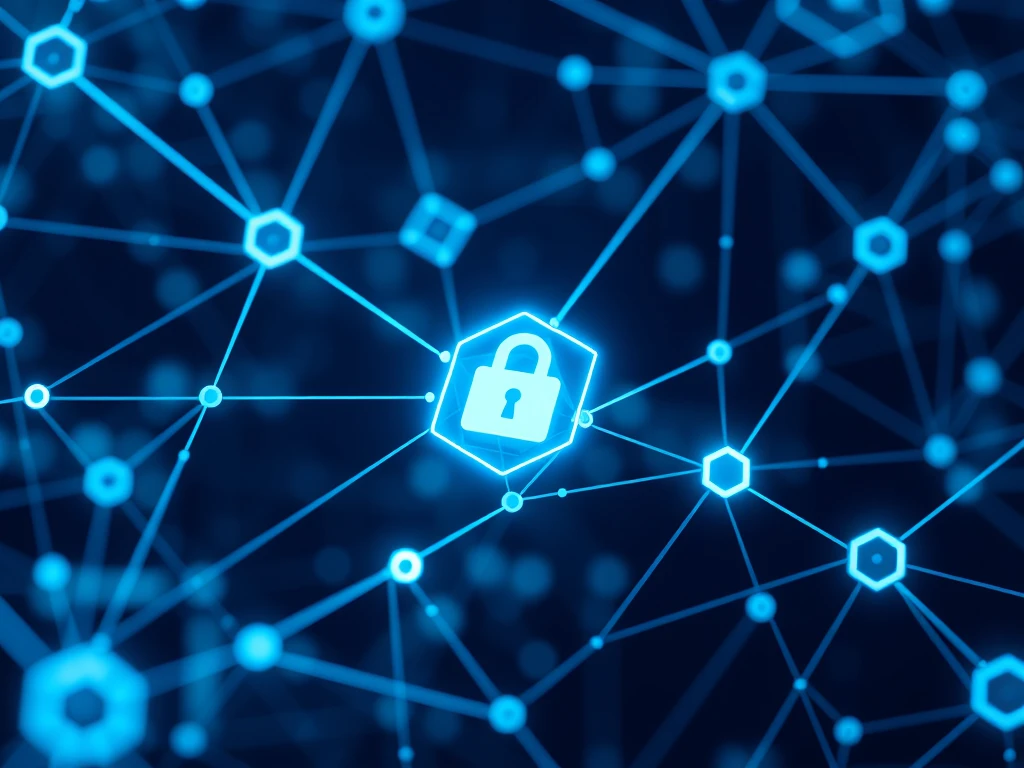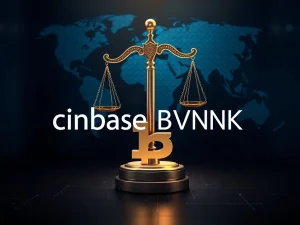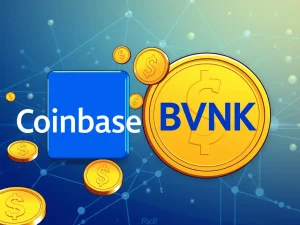Urgent Need: Blockchain Secures Digital Trust in the Age of AI-Generated Content

Are you concerned about what’s real online? In the age of rapidly advancing artificial intelligence (AI), it’s becoming increasingly difficult to distinguish between authentic digital content and sophisticated fakes. From deepfake videos of celebrities to AI-generated news articles, the line between reality and fabrication is blurring. This surge in AI-generated content presents a significant challenge to digital trust, potentially collapsing the foundations of online information as we know it. But there’s a powerful solution emerging: blockchain technology. Let’s dive into why blockchain is not just another tech buzzword, but an essential tool for safeguarding our digital future and ensuring content verification in this AI era.
Why is Digital Trust Eroding in the Age of AI-Generated Content?
Remember the Hollywood writers’ strike of 2023? Their concerns about AI encroaching on creative fields were just the tip of the iceberg. Now, we’re facing a deluge of hyper-realistic, AI-generated content. Consider these alarming points:
- Deepfakes are becoming indistinguishable from reality: Celebrity deepfakes are already being used for disinformation campaigns, as seen with the public service ad featuring synthetic versions of Taylor Swift and Tom Hanks.
- Public concern is rising sharply: Over half of Americans (52%) are more worried than excited about AI’s growing influence.
- Privacy fears are intensifying: A staggering 68% of global consumers are concerned about online privacy, largely due to deceptive media.
It’s no longer just about harmless memes. AI is revolutionizing content creation, distribution, and consumption. This capability to effortlessly produce synthetic media has serious repercussions for industries that rely on media integrity. Without robust content verification methods, the unchecked spread of deepfakes and unauthorized content threatens to completely destroy digital trust. This erosion of trust directly impacts content creators and businesses, exposing them to legal battles and damage to their reputations.
Blockchain: The Foundation for Restoring Digital Trust
Blockchain technology has long been championed for its potential in securing content ownership and decentralizing control. However, the urgency of its adoption has amplified with the rise of generative AI. Why is blockchain uniquely positioned to solve this problem, especially in terms of scalability and consumer confidence?
- Decentralized Verification Networks: Blockchain enables the creation of decentralized networks that can authenticate AI-generated content across various platforms. This eliminates reliance on single authorities and biased algorithms.
- Immutable Record of Origin: Every piece of AI-generated content can be recorded on a blockchain, creating a tamper-proof history of its creation and any modifications.
- Transparent Ownership Tracking: Blockchain facilitates transparent tracking of digital asset ownership, resolving disputes and establishing clear rights.
Think of blockchain as a digital fingerprint for AI-generated content. It permanently links content to its origin, allowing creators to prove ownership, businesses to monitor content usage, and consumers to verify authenticity.
Use Cases: Blockchain in Action for AI Content Verification
How can blockchain practically secure AI-generated content across different sectors? Let’s explore some compelling examples:
| Industry | Blockchain Application | Benefit |
|---|---|---|
| Gaming | Registering AI-crafted game assets on blockchain | Ensures traceable origin and protection against theft. |
| Film Production | Certifying AI-generated scenes on blockchain | Prevents unauthorized distribution and manipulation of film content. |
| Metaverse | Securing AI-generated avatars and digital identities with blockchain | Users maintain control over their digital representations with immutable authentication. |
Ultimately, end-to-end blockchain integration will prevent the unauthorized use of AI-generated avatars and synthetic media through on-chain identity verification. This ensures that digital identities are linked to verified entities, significantly reducing fraud and impersonation risks.
Addressing the Ownership Question: Blockchain and AI Intellectual Property
Current intellectual property (IP) laws are inadequate for the age of AI-generated content. Consider this crucial question: if AI creates content, who owns it legally?
- The person providing the input?
- The company behind the AI model?
- Or is it unowned?
This ambiguity leads to legal uncertainties and escalates disputes over digital assets. Blockchain offers a clear solution by authenticating digital assets and providing transparent ownership records. By recording AI-generated content on-chain, we establish a definitive and auditable ownership trail, mitigating legal risks and fostering a more secure digital environment.
Combating Crypto Scams and Misinformation with Blockchain
The crypto world isn’t immune to the dangers of AI-powered deception. In fact, it’s a prime target. Deepfakes and sophisticated AI-driven attacks are causing substantial losses in the crypto space. Reports show a surge in AI-driven scams targeting crypto wallets. Blockchain can play a critical role in protecting the crypto ecosystem by:
- Verifying the authenticity of crypto projects and teams: Blockchain-based identity verification can help ensure that individuals and teams behind crypto projects are genuine, reducing the risk of rug pulls and scams.
- Tracking and flagging fraudulent content: By registering official communications and announcements on-chain, the crypto community can more easily identify and flag fake news or phishing attempts.
- Securing NFT ownership and provenance: Blockchain’s inherent security for NFTs becomes even more vital when AI can generate counterfeit digital art. On-chain verification maintains the integrity of digital collectibles.
Why Decentralization is Key: Overcoming Limitations of Centralized Systems
Some argue that centralized platforms or watermarking techniques are sufficient for AI content verification. However, these approaches have significant drawbacks:
| Verification Method | Limitations | Why Blockchain is Superior |
|---|---|---|
| Centralized Platforms | Control algorithms, potential for bias, single point of failure. | Blockchain offers decentralized, transparent, and community-driven verification. |
| Watermarking | Watermarks can be easily removed or manipulated, offering weak security. | Blockchain provides immutable and tamper-proof verification. |
| Government Databases | Vulnerable to hacking, data breaches, and control by single entities with vested interests. | Blockchain is inherently more secure and resistant to single points of control or failure due to its distributed nature. |
AI-generated media is evolving at an unprecedented pace, far outpacing existing safeguards. Businesses, creators, and platforms are increasingly vulnerable to fraud and reputational damage. For AI to be a force for progress, not deception, our authentication mechanisms must advance in tandem. Blockchain’s decentralized nature offers a scalable solution that can keep pace with AI’s rapid development, providing the necessary infrastructure to maintain transparency and protect IP rights.
The Ticking Clock: Acting Now to Secure Digital Trust
The generative AI market is projected to explode to $1.3 trillion by 2032. Securing and verifying digital content, particularly AI-generated media, is now more critical than ever. Crypto-related scams fueled by AI-generated deception are projected to reach record highs in 2025. The next phase of the AI revolution will be defined not only by its generative power but also by our ability to implement robust verification systems promptly.
Without decentralized content verification systems based on blockchain, it’s only a matter of time before industries reliant on AI-generated content lose credibility and face stricter regulations. It’s not too late to embrace decentralized authentication frameworks and secure digital trust before unchecked deception causes irreversible damage.
Opinion by: Roman Cyganov, founder and CEO of Antix. This article is for general information purposes and is not intended to be and should not be taken as legal or investment advice. The views, thoughts, and opinions expressed here are the author’s alone and do not necessarily reflect or represent the views and opinions of Crypto News Insights.







